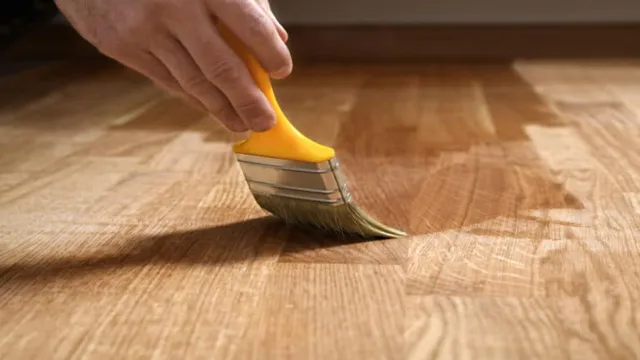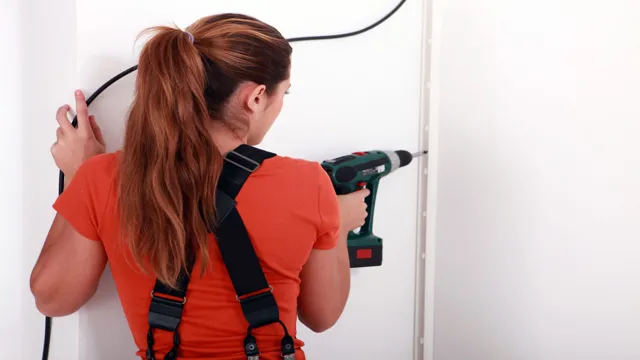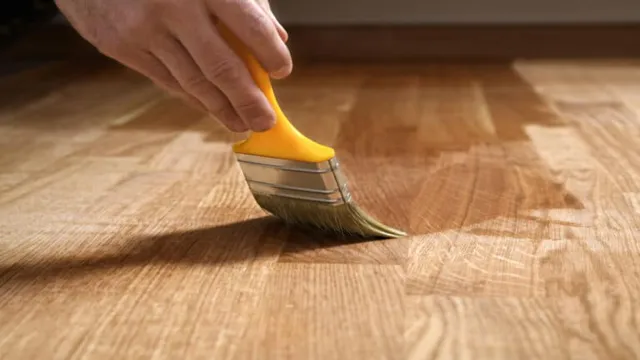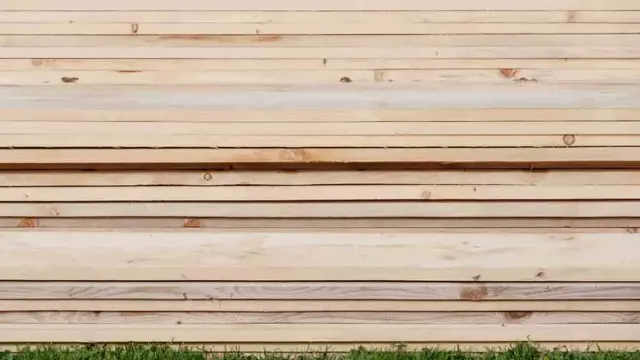How to Cut Wood at an Angle Lengthwise: Tips and Techniques for Perfect Cuts

Do you have a woodworking project that requires cutting wood at an angle lengthwise? Don’t worry, it’s not as intimidating as it may seem! With the right tools and technique, you can achieve accurate and precise angled cuts every time. In this blog, we’ll go over some tips and tricks on how to cut wood at an angle lengthwise, so you can create the perfect bevels and miters for your next project. From using a saw or a planer to setting the correct angle and maintaining safe working conditions, we’ll cover all the necessary steps to make your angled cuts look professional and polished.
So grab your tools and let’s get started!
Tools needed
When it comes to cutting wood at an angle lengthwise, the right tools can go a long way. First and foremost, you’ll need a saw – either a regular handsaw or a circular saw, depending on the size and shape of your wood. A miter saw can also come in handy for precise angle cuts.
If you’re working with larger pieces of wood, a table saw can be a great investment. In addition to your saws, you’ll need a ruler or protractor to measure out your angle and ensure accuracy. Clamps can also help keep your wood steady while you make your cuts.
And don’t forget about safety gear – goggles and gloves are crucial to protect your eyes and hands from sawdust and any potential splinters. With the right tools in hand, cutting wood at an angle lengthwise can be a breeze.
Circular saw, clamps, straight edge, measuring tape
When it comes to working with wood, having the right tools for the job can make all the difference. One essential tool for cutting wood is a circular saw. Circular saws are versatile and can be used for a variety of cuts, including rip cuts and cross cuts.
However, it’s important to use a straight edge when using a circular saw to ensure precise cuts. This is where clamps come in handy – they can be used to hold the straight edge securely in place. Another essential tool when working with wood is a measuring tape.
Taking accurate measurements is crucial to ensure that your cuts are precise and fit together perfectly. With these tools – a circular saw, clamps, straight edge, and measuring tape – you’ll be well-equipped to take on any woodworking project.

Preparation
Cutting wood at an angle lengthwise can seem like a daunting task, but with proper preparation, it can be easily achieved. Before making any cuts, it is important to choose the right saw for the job. A miter saw or a table saw with a miter gauge is ideal for making precise angled cuts.
Once the saw is selected, it’s important to make sure it is properly aligned by checking the blade’s angle and ensuring the fence is straight. Once the saw is aligned, it’s time to mark the cut on the wood using a measuring tool like a protractor or a speed square. Make sure you double-check the angle before making the cut, as this will determine the accuracy of the final piece.
Finally, it’s essential to secure the wood to the saw’s fence or table using clamps or other mechanisms to prevent any wobbling or slipping during the cut. Following these steps will help ensure a successful cut at the desired angle.
Measure and mark wood, secure straight edge with clamps
When it comes to woodworking, proper preparation is essential. Before you can begin making cuts, it’s important to measure and mark your wood accurately. This will ensure that your project turns out as planned and saves you from having to make costly mistakes.
Once you have your measurements, it’s a good idea to secure a straight edge to your wood with clamps. This will help guide your saw and ensure that your cuts are straight. No one likes a crooked cut, right? By taking the time to prepare your wood properly, you’ll be setting yourself up for success.
So, grab your measuring tools, double-check your numbers, and secure that straight edge with some sturdy clamps. It’s time to get to work!
Setting the saw
Cutting wood at an angle lengthwise can seem like a daunting challenge, especially if you’re not confident about your carpentry skills. However, with the help of a circular saw and some careful planning, you can easily achieve the perfect angled cut. The first step is to set the saw to the desired angle by adjusting the bevel gauge.
Be sure to double-check the angle with a protractor or angle finder to ensure accuracy. Next, set the depth of the blade to the thickness of the wood you’ll be cutting. When the saw is positioned over the wood, use clamps or weights to secure it firmly in place.
It’s important to remember to keep your hands, fingers, and other body parts away from the blade while cutting. Start the saw and slowly guide it through the wood, maintaining a steady pace. Voila! You now have a perfect angled cut that is both beautiful and functional.
With practice, cutting wood at an angle lengthwise will become second nature to you.
Adjust the saw blade to desired angle
When it comes to using a saw, it’s important to make sure the blade is set to the desired angle. This can help ensure clean and precise cuts on your material. To set the saw blade, start by loosening the blade lock knob and adjust the angle to the desired degree using a protractor or angle gauge.
Make sure the blade is tightened securely in place before use to prevent any accidents. It’s important to note that different blade types may require different angles, so be sure to check the manufacturer’s recommendations for optimal results. With a properly set saw blade, you’ll be able to tackle your cutting projects with confidence and ease.
Cutting the wood
Cutting wood at an angle lengthwise can be a tricky task, but with the proper tools and technique, you can do it like a pro. The first step is to choose the right saw, whether it be a circular saw, table saw, or miter saw. Once you have your saw, it’s essential to set the blade to the desired angle you want to cut.
A pro tip is to use a speed square to ensure you are making precise angle cuts. Start the saw and line up your wood, ensuring it is securely in place. Slowly push the wood through the saw, staying focused on keeping the blade on the line and ensuring your fingers stay away from the blade.
It’s important to take your time and not rush the cut to ensure you get a clean and accurate angle cut. With some practice, cutting wood at an angle lengthwise will become second nature, and you’ll be able to tackle any woodworking project with confidence.
Slowly guide saw along straight edge, keeping blade on marked line
Cutting wood can be a daunting task, but with the right technique, it can be a breeze. When it comes to cutting along a straight line, the most important thing is to keep the blade of the saw on the marked line. Start by securing the wood to a stable surface to prevent it from moving during the cutting process.
Then, hold the saw firmly with both hands and position it at the starting point of the marked line. Slowly guide the saw along the straight edge, using a steady, even pressure to make the cut. It’s essential to keep your eye on the blade and maintain a right angle to avoid veering off course.
Remember to take your time and make small, precise cuts rather than trying to rush through the process. With practice, cutting wood along a straight line will become a natural and straightforward task. So don’t hesitate to grab that saw and start cutting!
Safety precautions
Cutting wood at an angle lengthwise can be a bit tricky, and it’s crucial to take the necessary safety precautions to avoid any accidents or mishaps. First and foremost, wearing adequate safety gear is a must. This includes eye protection, ear protection, and gloves to protect your hands from the saw.
Secondly, ensure that the wood is held securely in place, preferably using a clamp or vice. This will prevent the wood from moving, making it easier to cut accurately. Additionally, before starting the saw, make sure the blade is sharp and in good condition.
A dull blade can bind or kickback, causing serious injury. Finally, take into account your environment when cutting wood. Make sure the area is well-lit and free of clutter or debris to avoid any tripping hazards.
Following these precautions will ensure a safer and more efficient wood cutting experience.
Wear eye and ear protection, keep hands away from blade
When it comes to working with machinery that has a sharp blade, safety should always be the top priority. One of the first things to keep in mind is wearing eye and ear protection. A flying piece of debris or loud noise can cause serious damage that may even be permanent.
It’s also important to keep hands and fingers away from the blade, as one accidental slip or touch can lead to a severe injury. Always use the proper tools for adjusting or changing the blade, and make sure the machine is in a secure position before starting it up. Remember, safety is not optional and should never be overlooked.
By taking these precautions, you can ensure that you’ll be able to use your machinery safely and efficiently, without any unnecessary risks.
Conclusion
Cutting wood at an angle lengthwise can be intimidating, but with the right tools and technique, it can be easily accomplished. Remember to measure twice and cut once, and don’t be afraid to make adjustments as needed. And just like in life, sometimes things don’t turn out exactly as planned, but with a little ingenuity, you can still make something beautiful out of it.
Happy sawing!”
FAQs
What tools do I need to cut wood at an angle lengthwise?
You will need a saw (circular, miter, or hand saw), measuring tape, pencil, and a straightedge to mark the angle.
How do I measure the angle I want to cut?
Use a protractor or angle finder tool to measure the angle you want to cut, then use a straightedge to draw the line on the wood.
Can I use a circular saw to cut wood at an angle lengthwise?
Yes, you can use a circular saw with an adjustable base plate and a guide rail to cut wood at an angle lengthwise. Make sure to use the appropriate blade for the type of wood you are cutting.
What is the best way to secure the wood while cutting at an angle lengthwise?
Use clamps or a vice to secure the wood in place before starting the cut. This will ensure safety and accuracy.
How do I adjust the miter saw for cutting wood at an angle lengthwise?
Set the miter saw to the desired angle, then adjust the blade height and fence to ensure a straight and precise cut.
What safety gear should I wear when cutting wood at an angle lengthwise?
Always wear eye and ear protection, gloves, and a dust mask. Avoid loose clothing or jewelry that could get caught in the saw.
Can I use a hand saw to cut wood at an angle lengthwise?
Yes, you can use a hand saw to make angled cuts in wood. Use a miter box to guide the saw and ensure accuracy.







